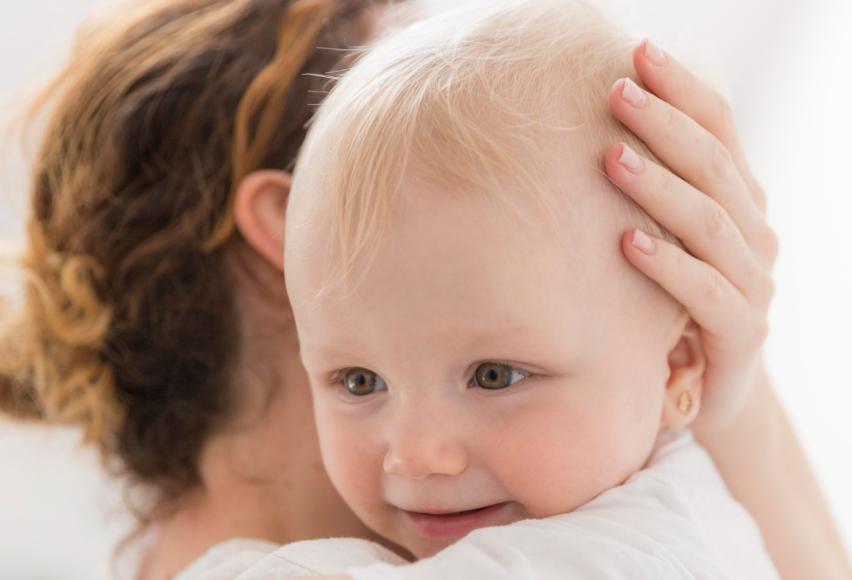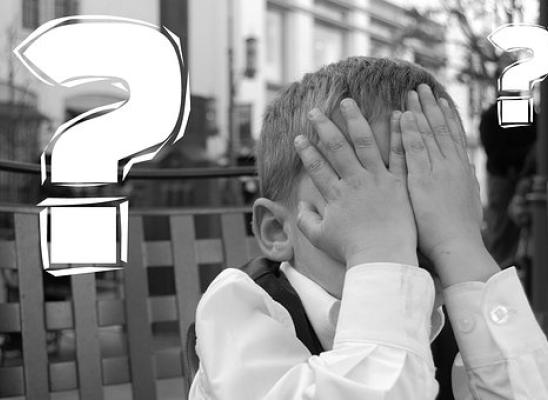What Every Parent Needs to Know About Baby Trich

Online test
Find out the severity of your symptoms with this free online test
When you think of trichotillomania, often referred to “trich,” you probably think of an older child or young adult, not a baby or toddler. The age of onset for trich is generally between ages 9 and 13. What you might not know is that hair pulling is seen in infants and younger children too. This pediatric trichotillomania is commonly referred to as “baby trich.”
Pediatric trichotillomania is characterized by repetitive hair pulling, resulting in hair loss and impaired psychosocial functioning for the child and the family. Childhood hair pulling often resolves on its own. Sometimes, however, it continues and becomes a source of worry for parents. Left untreated, trich can persist into adulthood and result in more severe symptoms.
While the exact cause of pediatric trichotillomania is unknown, evidence suggests that the foundations of trich are found in early childhood psychosocial stressors. Psychosocial stressors can be any experience or circumstance that challenges a person’s ability to adapt. Here are few examples of common childhood psychosocial stressors:
- Parents’ divorce
- A mentally ill parent or sibling
- Poor parent-child bonding (also known as attachment)
- Birth of a sibling
- Starting pre-school
- Frequent moves (lack of stability)
- Loss of a parent
- Inconsistent parenting or conflicting parental styles
Some stressors are inevitable. For example, kids have to attend school. Others, like parenting styles, can be modified. Sometimes it’s hard to know what the problem even is. What’s a parent to do?
While there is no single treatment for pediatric trichotillomania, there is mounting evidence that early treatment involving the child and their caregivers (usually parents) may be effective in alleviating symptoms and ease the impact of stressors. Interventions such as psychoeducation, caregiver-child psychotherapy (CCP) or child-centered play therapy have been suggested as possible interventions. These interventions promote healthy interactions between parents and children, and foster understanding of the child’s behavior.
What can we learn about baby trich and how their caregivers can help? A new study takes a look at pediatric trichotillomania through the caregiver-child lens and sheds light how to help families navigate this complex issue.
ACEs and Attachments
Attachments are the ways that we bond to others. These patterns are formed early in childhood and shaped by the emotional bond that a child develops with their caretakers (usually parents). The parents provide safety and security, and the child looks to them for nurturing, comfort, and protection. These early attachments have been shown to have significant impacts on a child’s emotional and psychological health as they mature. Early attachment patterns can also affect later relationships and well-being.
If the parent-child bond is healthy, it’s known as a secure attachment style. People with secure attachment are able to express their feelings, trust others, and are comfortable being alone. Think of a child who can easily separate when mom or dad leaves for work or is able to express their feelings in age-appropriate ways.
Insecure attachments develop in early childhood when a child learns they are unable to rely on their parent or caregiver to meet their needs. In short, the child does not feel secure with their primary caregiver. If the parent-child bond is not secure, it is not uncommon to see behavioral and emotional problems. Separating may be difficult. Children may have problems expressing or regulating their emotions, tantrums may be frequent. They may be fearful or anxious.
Some research has suggested that early attachment issues and parenting styles may play a role in the BFRBs like hair pulling. A parenting style known as affectionless control, a style where parents are unresponsive to their child’s needs for care while at the same time, hindering the child’s independence, was found to be a common factor. This style of parenting can create an anxious attachment that can negatively impact the child’s self-identity. This style of parenting has also been associated with higher levels of neuroticism.
Adverse Early Childhood Experiences (ACES) are potentially traumatic events or aspects of a child’s environment that can undermine their sense of safety, security, and bonding. There is some indication that trauma and adverse childhood experiences, especially those occur during the preschool years (ages 3-5), may play a role in the development of BFRBs like trich and skin picking. Research suggests that there may be “windows” during a child’s developmental period when they may be at increased risk for the development of mental health issues.
How Children Communicate
Just why babies and toddlers pull their hair isn’t exactly clear. It is thought that the behavior, at least in very young children, is largely sensory in nature. It’s a behavior meant to self-soothe, not unlike thumb sucking. As they approach toddler age, hair pulling can be habitual. For some, it can be attention-seeking and more intentional.
Behavior is purposeful. What behavior means isn’t always easy to interpret. For example, a tantrum might seem attention-seeking but might actually be an expression of fear. Young children don’t yet have the words to effectively communicate thoughts and feelings in the ways older children might. They may act out their feelings or express themselves through play. Parent-child play therapy can help parents to better understand their child while also encouraging bonding.
What the Case Studies Reveal
This study examined five cases of hair pulling in children from the ages of 21 months to four years old. Some children lived with both parents, some with a single parent or with grandparents. All cases Most of the cases revealed a number of adverse early childhood experiences that may have impacted the parent-child or caregiver-child bond.
These findings are in keeping with the current literature and suggest that psychosocial factors may play a role in the development of pediatric trichotillomania. Common experiences included:
- Divorce
- parental mental illness
- divergent parental approaches
- poor caregiver-child interaction
- birth of a sibling
- separation issues
- starting pre-school
- frequent moves
Some caregivers viewed their child’s behavior as attention-seeking or intentional. Indeed, some of the behavior was situation-specific suggesting that it may have been an attempt to engage the caregiver or regulate emotions.
These findings highlight the need to engage both the child and the caregivers in treatment. Children are highly dependent on their caregivers for structure, love and comfort, and security. Caregivers may not always know how to deal with the issues or how to engage positively with their child. For the cases with follow through on treatment, positive improvements in symptoms and caregiver-child relationships were noted.
The study authors note that most families in this study were reluctant to engage in therapy. They hypothesize that those who were less motivated were those with less time to invest in positive play activities, leaving little space for children to express themselves as children express themselves through play. They suggest this might lead to self-soothing behaviors like hair pulling. Another possible reason noted for the reluctance to participate may be a defense mechanism for dealing with parental feelings of guilt and insecurity.
Encouraging healthy relationships and positive play time between children and their care givers is vital to a child’s development and well-being. While more understanding of pediatric trichotillomania is needed, improving parent-child communication and connection is a great place to start.
References
1. Walther, M. R., Snorrason, I., Flessner, C. A., Franklin, M. E., Burkel, R., & Woods, D. W. (2013). The trichotillomania impact project in young children (TIP-YC): Clinical characteristics, comorbidity, functional impairment and treatment utilization. Child Psychiatry & Human Development, 45(1), 24-31. https://link.springer.com/article/10.1007/s10578-013-0373-y
2. Falcao, M., Magalhaes, P., Sa, T., Liz, M., Lopes, A. F., Antunes, M., Silva, A. F., & Martins, V. (2023). Baby trich: the role of psychosocial stressors in pediatric trichotillomania. Nascer e Crescer - Birth and Growth Medical Journal, 32(1). https://revistas.rcaap.pt/nascercrescer/article/view/25718
3. Rees C. (2007). Childhood attachment. The British journal of general practice : the journal of the Royal College of General Practitioners, 57(544), 920–922. https://www.ncbi.nlm.nih.gov/pmc/articles/PMC2169321/
4. Valle, S., Chesivoir, E., & Grant, J. E. (2021). Parental bonding in trichotillomania and skin picking disorder. Psychiatric Quarterly. https://link.springer.com/article/10.1007/s11126-021-09961-4
5. Özten, E., Sayar, G. H., Eryılmaz, G., Kağan, G., Işık, S., & Karamustafalıoğlu, O. (2015). The relationship of psychological trauma with trichotillomania and skin picking. Neuropsychiatric disease and treatment, 11, 1203–1210. https://www.ncbi.nlm.nih.gov/pmc/articles/PMC4440428/
6. Dunn, E. C., McLaughlin, K. A., Slopen, N., Rosand, J., & Smoller, J. W. (2013). Developmental timing of child maltreatment and symptoms of depression and suicidal ideation in young adulthood: results from the National Longitudinal Study of Adolescent Health. Depression and anxiety, 30(10), 955–964. https://pubmed.ncbi.nlm.nih.gov/23592532/
Online test
Find out the severity of your symptoms with this free online test
Start your journey with TrichStop
Take control of your life and find freedom from hair pulling through professional therapy and evidence-based behavioral techniques.
Start Now



